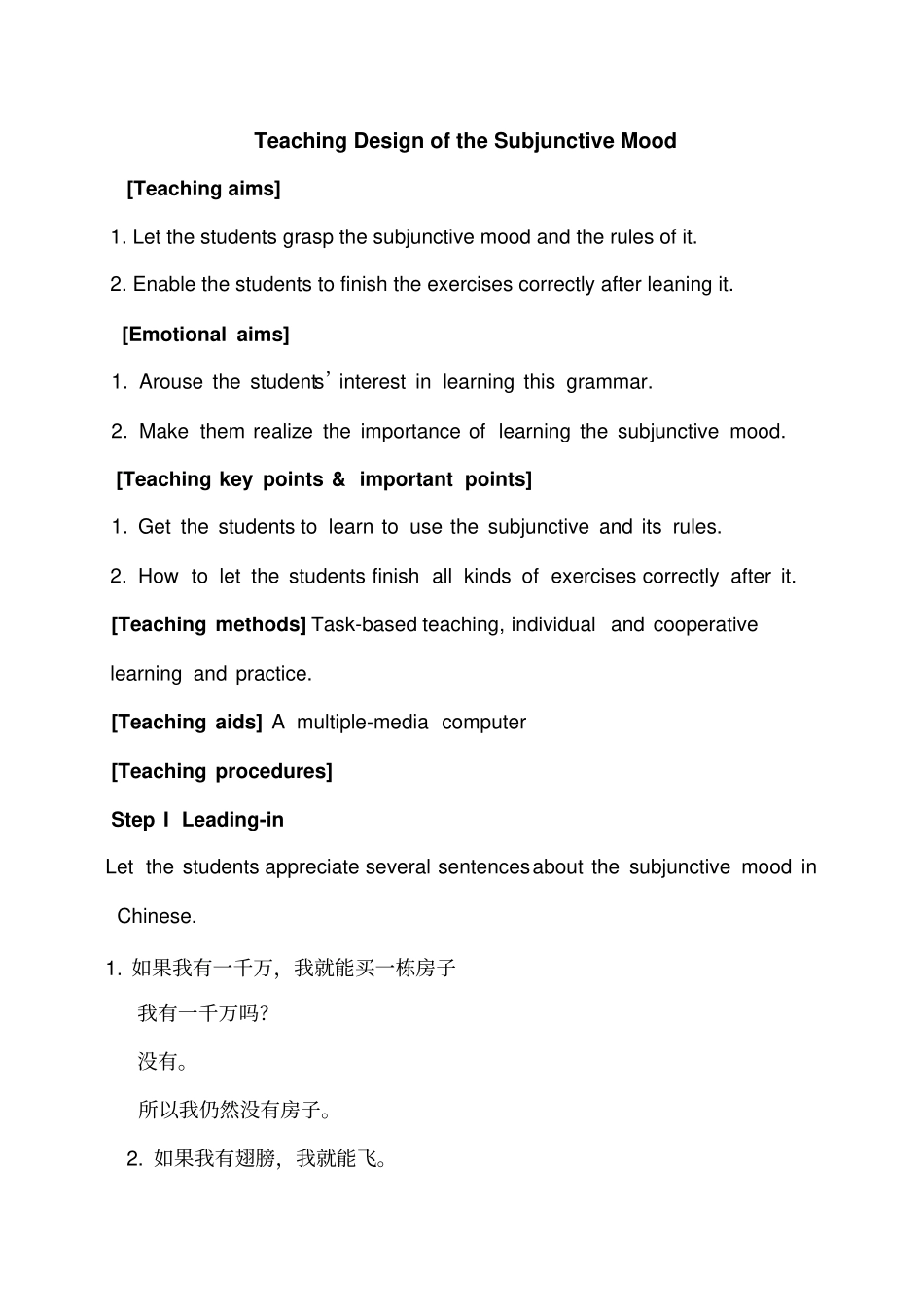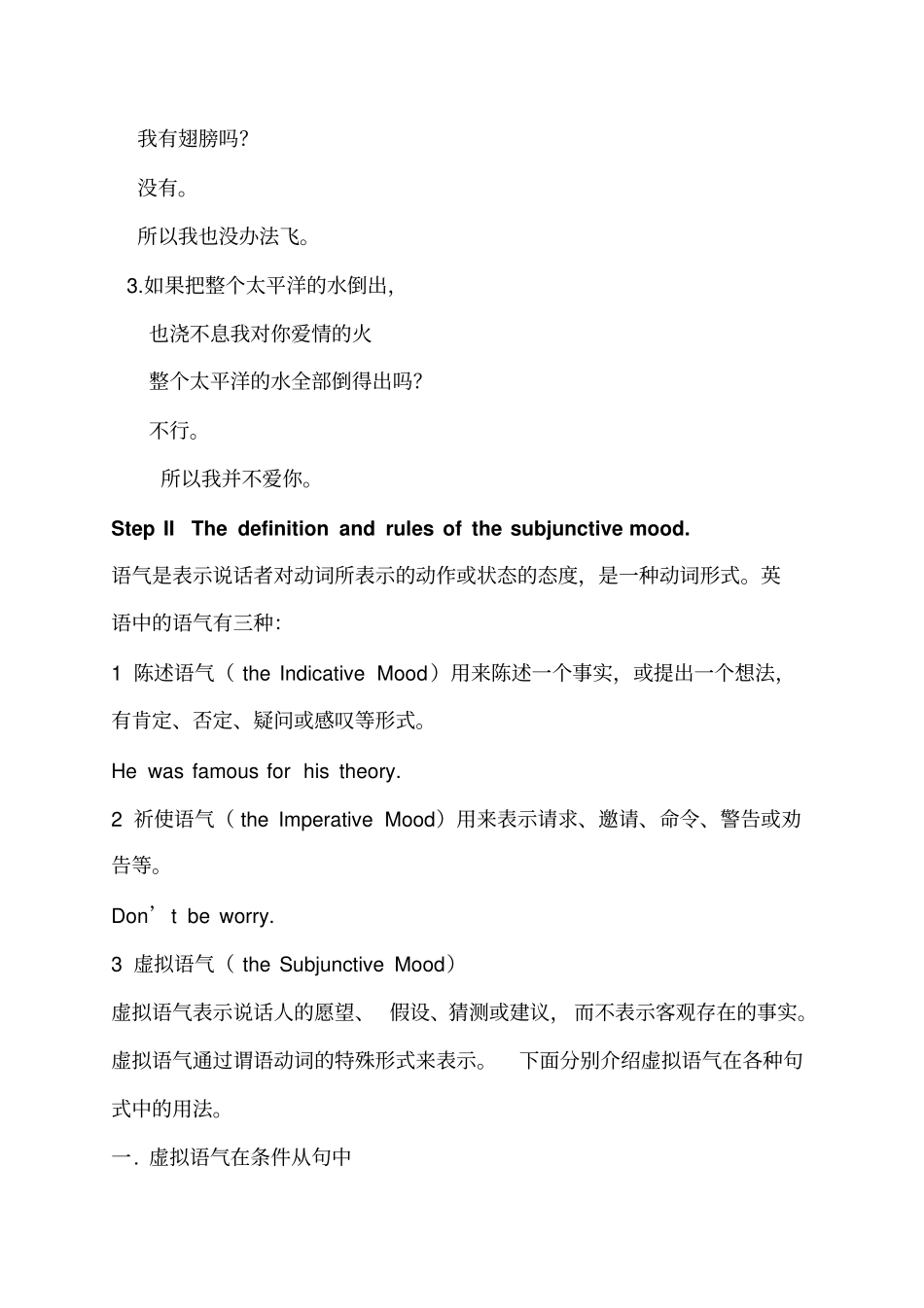Teaching Design of the Subjunctive Mood [Teaching aims] 1. Let the students grasp the subjunctive mood and the rules of it.2. Enable the students to finish the exercises correctly after leaning it.[Emotional aims] 1. Arouse the students’interest in learning this grammar. 2. Make them realize the importance of learning the subjunctive mood. [Teaching key points & important points] 1. Get the students to learn to use the subjunctive and its rules. 2. How to let the students finish all kinds of exercises correctly after it. [Teaching methods] Task-based teaching, individual and cooperative learning and practice. [Teaching aids] A multiple-media computer [Teaching procedures] Step I Leading-in Let the students appreciate several sentences about the subjunctive mood inChinese.1. 如果我有一千万,我就能买一栋房子我有一千万吗?没有。所以我仍然没有房子。2. 如果我有翅膀,我就能飞。我有翅膀吗?没有。所以我也没办法飞。3.如果把整个太平洋的水倒出,也浇不息我对你爱情的火整个太平洋的水全部倒得出吗?不行。所以我并不爱你。Step II The definition and rules of the subjunctive mood. 语气是表示说话者对动词所表示的动作或状态的态度,是一种动词形式。英语中的语气有三种:1 陈述语气( the Indicative Mood)用来陈述一个事实,或提出一个想法,有肯定、否定、疑问或感叹等形式。He was famous for his theory. 2 祈使语气( the Imperative Mood)用来表示请求、邀请、命令、警告或劝告等。Don’t be worry. 3 虚拟语气( the Subjunctive Mood)虚拟语气表示说话人的愿望、 假设、猜测或建议, 而不表示客观存在的事实。虚拟语气通过谓语动词的特殊形式来表示。下面分别介绍虚拟语气在各种句式中的用法。一. 虚拟语气在条件从句中1、在条件从句中(叫虚拟条件句 ),表示与事实相反的条件。分三种情况(以do 为例):时间If 从句主句现在were/did wound/should/might/could do将来were/didshould do wound/should/might/could dowere to do过去had done wound/should/might/could have done 1...


